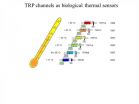(Press-News.org) A single dose of the bivalent human papillomavirus (HPV) vaccine (Cervarix®, GlaxoSmithKline group of companies) may offer a similar level of protection against HPV-16/18 infections, which cause about 70% of cervical cancers, as the current two- and three-dose schedules, according to new research combining data from two large phase 3 trials published in The Lancet Oncology.
"Our findings question the number of HPV vaccine doses truly needed to protect the majority of women against cervical cancer, and suggest that a one-dose schedule should be further evaluated. If one dose is sufficient, it could reduce vaccination and administration costs as well as improve uptake. This is especially important in less developed regions of the world where more than 80% of cervical cancer cases occur," says co-lead author Dr Aimée Kreimer from the National Cancer Institute (NCI), National Institutes of Health, USA. [1]
Worldwide, cervical cancer is the fourth most common cancer in women. The bivalent vaccine targets HPV types 16 and 18 that are responsible for about 70% of cervical cancers. The HPV-16/18 vaccine was initially approved to be given in three doses over 6 months, but many countries are moving to a two-dose schedule in adolescents.
This new combined analysis of two independent trials strengthens previous findings from the NCI Costa Rica HPV Vaccine Trial (CVT) which reported that young women who received three, two, or one dose of the bivalent vaccine were equally protected against infection with HPV-16/18 for at least 4 years after vaccination.
Due to the lack of efficacy data on fewer than three doses, the researchers conducted a post-hoc analysis combining data from the CVT that included 7466 healthy women aged 18-25 years old and the Papilloma Trial against Cancer in Young Adults (PATRICIA) trial in 18644 healthy women aged 15-25 years from Asia-Pacific, Europe, Latin America, and North America. Women in both trials were randomly assigned to receive the HPV-16/18 vaccine or a control (hepatitis A) vaccine, given in three doses: at enrolment, 1 month, and 6 months. However, some of the women received fewer than three doses, mainly because their vaccination was discontinued due to pregnancy.
After excluding women with no follow up or who had cervical HPV infection at enrolment, the investigators calculated vaccine efficacy against HPV infection after three doses (22327 women), two doses (1185), and one dose (543). Women were followed on average for 4 years.
High vaccine efficacy was seen against incident HPV-16/18 infections regardless of the number of doses received. This result was also observed in a subgroup of women with no sign of HPV infection either before or at the time of first vaccination, suggesting that these results are relevant to sexually-naïve girls in the recommended age range for HPV vaccination (ie, 11-12 years).
In further analyses, partial protection against other HPV types not included in the vaccine formulation was seen among women who received two doses 6 months apart, similar to that reported for three doses.
The authors caution that more data are needed before policy guidelines can be changed. Dr Cosette Wheeler, co-lead author from the University of New Mexico Health Sciences Center, Albuquerque, USA, explains, "Using existing data, we showed that a single dose of the bivalent HPV vaccine may be sufficient to substantially reduce cervical cancer incidence. Yet, a new randomised study will be needed to confirm these findings and move the field forward. Additionally, duration of protection from a single dose must be demonstrated beyond 4 years." [1]
Dr Julia Brotherton from the Victorian Cytology Service Registries, Melbourne, Australia said of the findings, "If HPV vaccines could be delivered as one dose, while retaining their efficacy against the most oncogenic HPV types 16 and 18, the global burden of cervical cancer would substantially decrease. Data from studies have shown how effective one-vaccine dose campaigns can be in even the most resource-poor settings (eg, meningitis A vaccines in sub-Saharan Africa). We can imagine that such campaigns could happen every 5-10 years with the aim of vaccination of, for example, all 9-14 year old girls with one dose of the HPV vaccine. This campaign would not need ongoing resources to sustain annual vaccination programmes against HPV in settings with many pressing health priorities and small numbers of health-care workers."[1]
INFORMATION:
NOTES TO EDITORS:
CVT was funded by the US National Cancer Institute intramural research program, National Institutes of Health Office of Research on Women's Health, and Ministry of Health of Costa Rica; GlaxoSmithKline Biologicals SA funded the PATRICIA trial.
[1] Quotes direct from authors and cannot be found in text of Article.
NEW YORK, June 9 -- The World Health Organization released its 2015 updated essential medicines list and for the first time included the progesterone contraceptive vaginal ring (CVR), a contraceptive safe and effective for lactating women in the postpartum period.
The progesterone CVR, developed by the Population Council, is an intravaginal ring that provides women who breastfeed at least four times a day with a contraceptive option as early as four weeks after giving birth. It can be used for up to a year for improved birth spacing.
'More than 220 million women in ...
UC Davis researchers have identified the molecular interactions that allow capsaicin to activate the body's primary receptor for sensing heat and pain, paving the way for the design of more selective and effective drugs to relieve pain. Their study appeared online June 8 in the journal Nature Chemical Biology.
Capsaicin is the ingredient that makes chili peppers spicy and hot. The same pathway in the body that responds to spicy food is also activated after injury or when the immune system mounts an inflammatory response to bacteria, viruses, or in the case of autoimmune ...
Our sun is a volatile star: explosions of light, energy and solar materials regularly dot its surface. Sometimes an eruption is so large it hurls magnetized material into space, sending out clouds that can pass by Earth's own magnetic fields, where the interactions can affect electronics on satellites, GPS communications or even utility grids on the ground.
The clouds can be large or small. They can be relatively slow or as fast as 3,000 miles per second, but only one component has a strong effect on how much a CME will arrange the magnetic fields in near-Earth space. ...
Researchers at the University of Pennsylvania have found a three to five percent reduction in the probability of criminal recidivism among a sample of juveniles arrested for felony drug offenses, some of whom were processed as adults due to their age at the time of their arrests.
In a study published in the Journal of Research in Crime and Delinquency, Charles Loeffler, an assistant professor of criminology in the School of Arts & Sciences and Ben Grunwald, a doctoral candidate in the criminology department, analyzed the effect of processing juveniles as adults using ...
For engine designers in the digital age, time is money. And that time is measured in computer cycles.
Researchers at the U.S. Department of Energy's Argonne National Laboratory are partnering with Convergent Science, Inc. (CSI), to speed up a key piece of modeling and simulation software to ensure those cycles are used as effectively as possible, reducing product development time and resulting in better engines and savings for consumers. The scale of the speed gains were recently demonstrated when researchers ran the largest engine simulation to date on more than 4,000 ...
Irvine, Calif., June 9 -- Brain inflammation caused by chronic nerve pain alters activity in regions that regulate mood and motivation, suggesting for the first time that a direct biophysical link exists between long-term pain and the depression, anxiety and substance abuse seen in more than half of these patients, UC Irvine and UCLA researchers report.
This breakthrough finding also points to new approaches for treating chronic pain, which is second only to bipolar disorder among illness-related causes of suicide. About a quarter of Americans suffer from chronic pain, ...
MAYWOOD, Ill. -- Brain lesions in children can be especially challenging to diagnose, according to a report in the journal Frontiers in Neurology by a multidisciplinary team of Loyola University Medical Center physicians.
Lesions include tumors, abnormal blood vessel formations and abscesses and inflammation due to infections.
In the pediatric population, such lesions 'can have a large variety of underlying etiologies (causes), which can be challenging to differentiate on neuroimaging,' lead author Marisa McGinley, M.D., and colleagues report.
The Loyola physicians ...
Promotion of handwashing with soap and weekly nail clipping are both successful strategies to decrease intestinal parasite re-infection rates in school aged Ethiopian children, according to a study published by Mahmud Abdulkader Mahmud and colleagues from Mekelle University, Ethiopia, in this week's PLOS Medicine.
The researchers reached these conclusions by conducting a cluster randomized controlled trial in which 367 parasite-negative school-aged children in Northern Ethiopia were randomly assigned to either the handwashing intervention, the nail clipping intervention, ...
Tropical cyclones are not too common in the Arabian Sea, but tropical cyclone 01A, now renamed Ashobaa, formed this week. NASA/JAXA's Global Precipitation Measurement or GPM core satellite flew over Ashobaa and gathered data that provided a 3-D look at the rainfall in the storm.
The GPM core observatory satellite flew over Ashobaa on the morning of June 8 at 0811 UTC (4:11 a.m. EDT). Tropical cyclone Ashobaa had sustained wind speeds of about 40 knots (46 mph) when the satellite passed overhead.
On June 9 at 0900 UTC (5 a.m. EDT), tropical cyclone Ashobaa had maximum ...
MADISON, Wis. -- Scientists have prior evidence that the hormone estrogen is a major driver in the growth of cervical cancer, but a new study examining genetic profiles of 128 clinical cases reached a surprising conclusion -- estrogen receptors all but vanish in cervical cancer tumors.
This counterintuitive finding, reported June 8 in the online Proceedings of the National Academy of Sciences, further bolsters the understanding of cervical cancer's progression and offers valuable new targets to fight the disease.
Lead author Johan den Boon, associate scientist with ...


